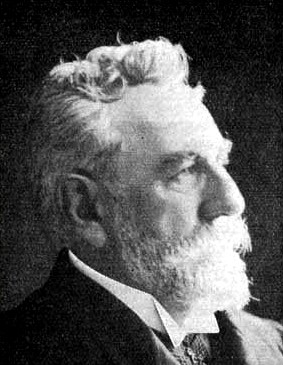Raphaël Dubois
Raphaël Dubois (1849–1929) was a French pharmacologist and biologist renowned for his pioneering research in bioluminescence. Born in Saint-Étienne, France, Dubois embarked on a scientific career that would lead him to make significant contributions to the fields of pharmacology and biology, particularly in understanding the mechanisms behind the natural phenomenon of bioluminescence.
Early Life and Education[edit | edit source]
Raphaël Dubois was born into a family with a keen interest in the natural sciences. He pursued his higher education in Paris, where he was drawn to the study of biology and chemistry. His early work focused on the physiology of the nervous system, but he soon developed a fascination with the luminescent properties of certain organisms.
Career and Research[edit | edit source]
Dubois' most notable work began in the late 19th century when he turned his attention to the study of bioluminescence. He was particularly interested in the luminescent properties of the firefly and certain species of fungi. Dubois coined the terms "luciferin" and "luciferase" for the substrate and enzyme, respectively, that react to produce light in these organisms. His research demonstrated that the light emission was a chemical reaction, fundamentally changing the understanding of bioluminescence at the time.
Throughout his career, Dubois held several academic positions, including a professorship at the University of Lyon, where he continued his research into the mechanisms of bioluminescence and its applications. He believed that the study of natural luminescence could lead to significant advancements in medical science, particularly in the diagnosis and treatment of diseases.
Legacy[edit | edit source]
Raphaël Dubois' work laid the groundwork for future research in bioluminescence and its application in various scientific fields, including molecular biology, ecology, and medical diagnostics. His pioneering studies opened new pathways for the development of bioluminescent markers in genetic engineering and medical imaging techniques.
Dubois was also an advocate for the application of scientific knowledge for practical purposes, including public health and industry. His vision for the practical applications of bioluminescence has been realized in numerous ways, from environmental monitoring to the development of novel therapeutic agents.
Selected Works[edit | edit source]
Dubois published extensively on the subject of bioluminescence and related topics. Some of his notable publications include studies on the chemical mechanisms of light production in living organisms and the potential applications of these phenomena in science and medicine.
Death and Honors[edit | edit source]
Raphaël Dubois passed away in 1929, leaving behind a legacy of scientific curiosity and discovery. His contributions to the fields of pharmacology and biology are commemorated by the scientific community, and his work continues to inspire researchers in the study of bioluminescence and its applications.
Search WikiMD
Ad.Tired of being Overweight? Try W8MD's physician weight loss program.
Semaglutide (Ozempic / Wegovy and Tirzepatide (Mounjaro / Zepbound) available.
Advertise on WikiMD
|
WikiMD's Wellness Encyclopedia |
| Let Food Be Thy Medicine Medicine Thy Food - Hippocrates |
Translate this page: - East Asian
中文,
日本,
한국어,
South Asian
हिन्दी,
தமிழ்,
తెలుగు,
Urdu,
ಕನ್ನಡ,
Southeast Asian
Indonesian,
Vietnamese,
Thai,
မြန်မာဘာသာ,
বাংলা
European
español,
Deutsch,
français,
Greek,
português do Brasil,
polski,
română,
русский,
Nederlands,
norsk,
svenska,
suomi,
Italian
Middle Eastern & African
عربى,
Turkish,
Persian,
Hebrew,
Afrikaans,
isiZulu,
Kiswahili,
Other
Bulgarian,
Hungarian,
Czech,
Swedish,
മലയാളം,
मराठी,
ਪੰਜਾਬੀ,
ગુજરાતી,
Portuguese,
Ukrainian
Medical Disclaimer: WikiMD is not a substitute for professional medical advice. The information on WikiMD is provided as an information resource only, may be incorrect, outdated or misleading, and is not to be used or relied on for any diagnostic or treatment purposes. Please consult your health care provider before making any healthcare decisions or for guidance about a specific medical condition. WikiMD expressly disclaims responsibility, and shall have no liability, for any damages, loss, injury, or liability whatsoever suffered as a result of your reliance on the information contained in this site. By visiting this site you agree to the foregoing terms and conditions, which may from time to time be changed or supplemented by WikiMD. If you do not agree to the foregoing terms and conditions, you should not enter or use this site. See full disclaimer.
Credits:Most images are courtesy of Wikimedia commons, and templates, categories Wikipedia, licensed under CC BY SA or similar.
Contributors: Prab R. Tumpati, MD

